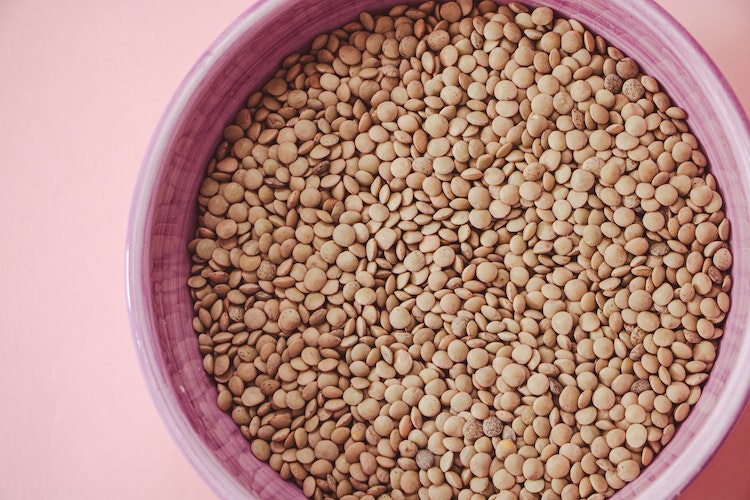On March 13, 2022, Bloomberg.com shared Teresa Ghilarducci’s opinion on how to “reconfigure consumption and lessen the blow” of inflation. When Bloomberg tweeted a rash summary of her suggestions, it caused quite the buzz. Many felt it was an insensitive and inconsiderate list for those suffering through the effects of inflation amid an already-trying “winter of severe illness and death.” Despite all that, why don’t we investigate her suggestion to substitute lentils for meat? Are lentils a safe alternative if you’re suffering from mold or yeast infection, such as Candida albicans?
How Does a Fungal Infection Affect the Body?
Serious internal fungal infections—like candidiasis—can affect the blood, heart, brain, eyes, bones, and other parts of the body. There is also evidence that fungal infections can result in cancer development.
Common Fungal Infection Symptoms (according to CandidaSupport.org):
• fatigue
• brain “fog”—hard to focus or think straight.
• oral thrush (a white film on the tongue or in the mouth)
• bad breath, foul taste in the mouth
• abdominal pain
• bloating and indigestion
• increasing allergies to foods (gluten or celiac problems can be a direct result of candida overgrowth)
• constant craving for something sweet!
• joint pain with arthritis-like symptoms
• chronic sinus drainage unaffected by antibiotics
• weight gain (or loss) and the inability to change it.
• fungus on the toe-nails
• itching, red eyes
• ear drainage
• candida skin rashes on the body (eczema, atopic dermatitis)
• candida rash around the groin or in the folds of skin
• anal, penile or vaginal itching
• hair loss
• vision problems
• depression
Can Ingesting Meat Make a Fungal Infection Worse?
According to TheCandidaDiet.com, there is evidence that animal proteins enable fungal overgrowth in the body. Strangely enough, they’re not wrong.
Multiple repeat studies have revealed that when animal proteins are metabolized, several byproducts are created in the intestines. One of those byproducts is ammonia.
A 2009 study revealed that a high-meat diet excretes twice as much ammonia as a low-meat diet. The least amount, obviously, was excreted by vegetarians and vegans.
But, why does the amount of ammonia present in the intestines even matter?
The reason is because ammonia increases the pH level of your colon, making it more alkaline.
The regular pH of the colon should be somewhere between 5.5 and 7.0, (i.e. slightly acidic). This level of acidity helps the body digest food and absorb nutrients. The body’s microbiome (gut flora) balance depends on the intestines to maintain a high level of acidity—this is what supports a strong immune system. Ingesting too much animal protein, particularly red meat, can throw your pH out of balance and create a breeding ground for fungus throughout the intestines.
Mold and yeast thrive in environments that are alkaline. Candida especially flourishes in the intestines of those who have a high-meat diet. Could there be other factors at play, such as high sugar intake? Sure. But the studies don’t lie. A high-meat intake creates the right environment for fungal overgrowth, regardless of any other less-than-ideal dietary factors at play.
Are there ways to encourage an acidic colon while keeping meat in your diet? Yes, there are ways to balance it out, but you’ll still be required to lower your meat consumption and increase your vegetation consumption. There’s simply no way around it.
How Can Lentils Help?
The Candida Diet (which works for any internal fungal infection—not just Candida albicans) relies heavily on mainly plant-based foods in their natural state—otherwise known as “whole” foods. This makes lentils an optimal choice. Not only is it a whole food, but it is also high in protein. Approximately 25-30% of the lentils’ calorie value comes from protein. In fact, just 1 cup of lentils provides 18 grams of protein, but most people consume 2 cups in a single sitting—that’s 36 grams of protein, which is just shy of the protein available in an 8 oz. steak.
Puy Lentils contain 36 grams of protein per cup!
So, overall, Ghilarducci wasn’t wrong in her assessment of the “cheaper” lentils vs. the “more expensive” meats. It’s not unreasonable at all to consider using lentils as a meat substitution, even if her article on inflation and the resulting Bloomberg tweet are in poor taste and unbearably cringe-worthy.
The fact that lentils are a high-protein whole food is not the only reason to consider substituting them for meat. One thing to consider is that red lentils contain an antifungal peptide. This means they don’t just supply nutrition without encouraging more fungal overgrowth; they also work aggressively against the fungus itself.
If you’re new to a high-vegetation diet, a vegetarian diet, or it’s simply your first time shifting to an antifungal diet, red lentils—of all the lentils available—are the very best type for transitioning. They’re clearly not only ideal for an antifungal diet, but they’re also very gentle on the digestive tract. Most people experience gas and bloating when suddenly switching to brown lentils. Red lentils, however, won’t have that effect (unless you take in an excessive serving).
Once you have transitioned with red lentils, you can feel free to try all the other types. Start with half a cup per meal and work your way up from there. Remember to always cook your lentils thoroughly, as this helps break down a stubborn enzyme that inhibits nutrient absorption. (Please see: The FarmHouse Guide’s article on soaking lentils.)
Concluding Points
All of Bloomberg’s insensitivities and offenses aside, lentils truly are a great substitute for meat, especially if you’re considering an anti-fungal diet. So, allow yourself to be offended over their lack of tact, not the facts.
MoldBlogger has multiple articles on the subject of an anti-fungal diet, so feel free to check out the following links or use our helpful search bar:
Anti-Fungal Diet to Help Cure a Yeast Infection
Foods to Eat When You Have Mold or Yeast in Your Body
Have you made the switch to lentils to overcome a fungal infection? If so, we’d love to receive your testimony in the comments below. Remember, your experience could be the answer another fungal overgrowth victim desperately needs.
For more information regarding mold, mold prevention, and mold solutions, please check out the rest of MoldBlogger.com.
Article by Amanda Demsky from the MoldBlogger team.


